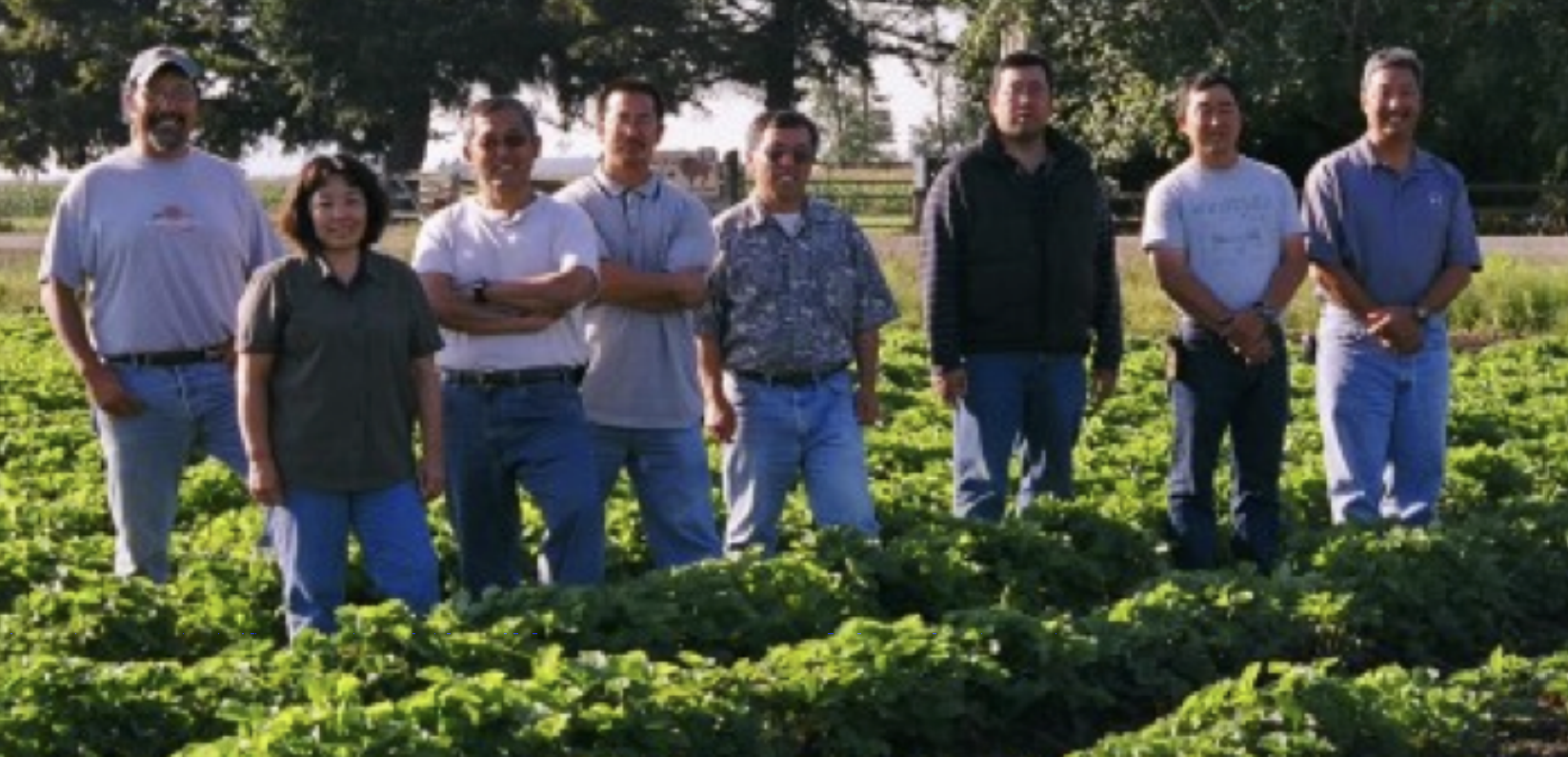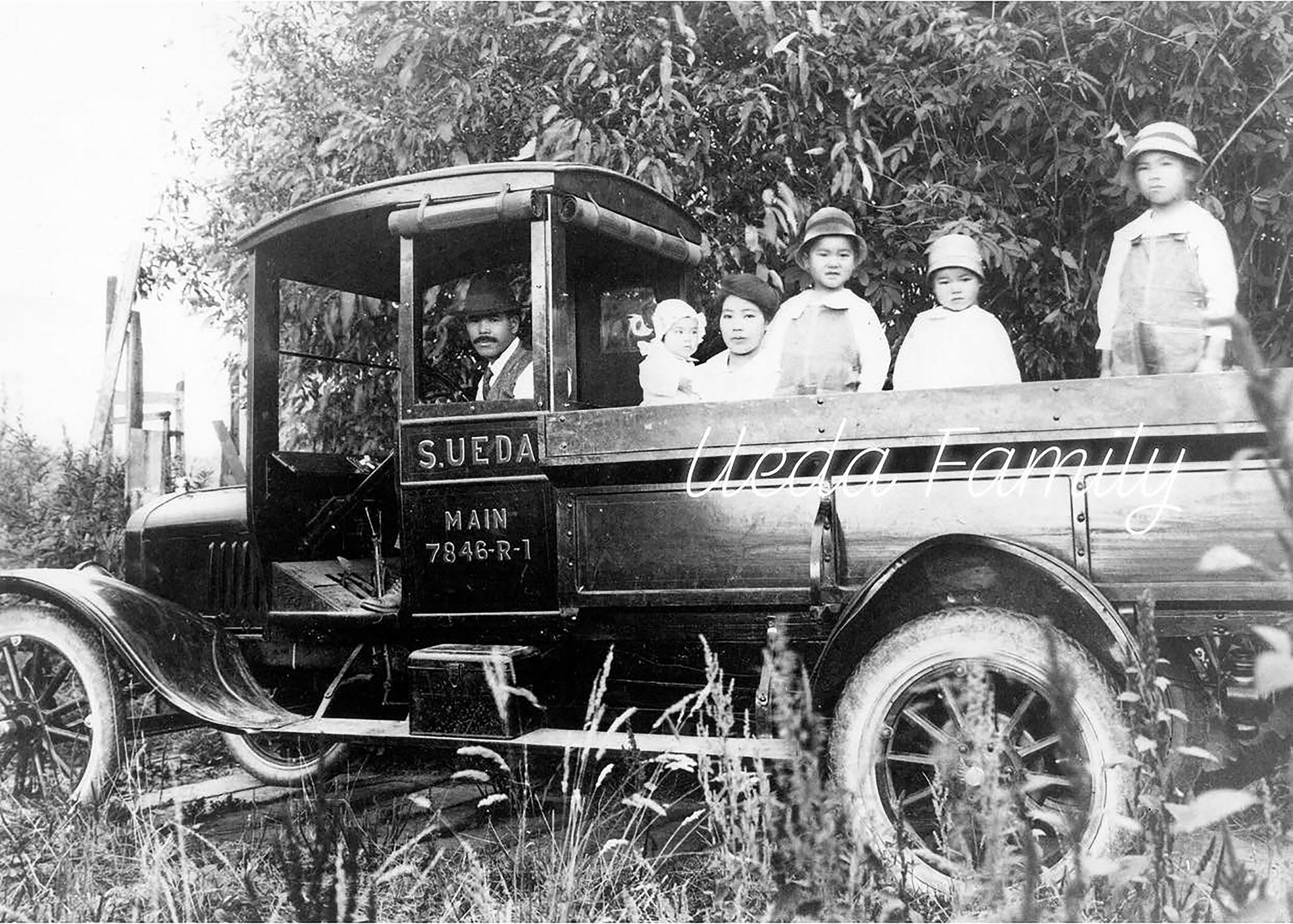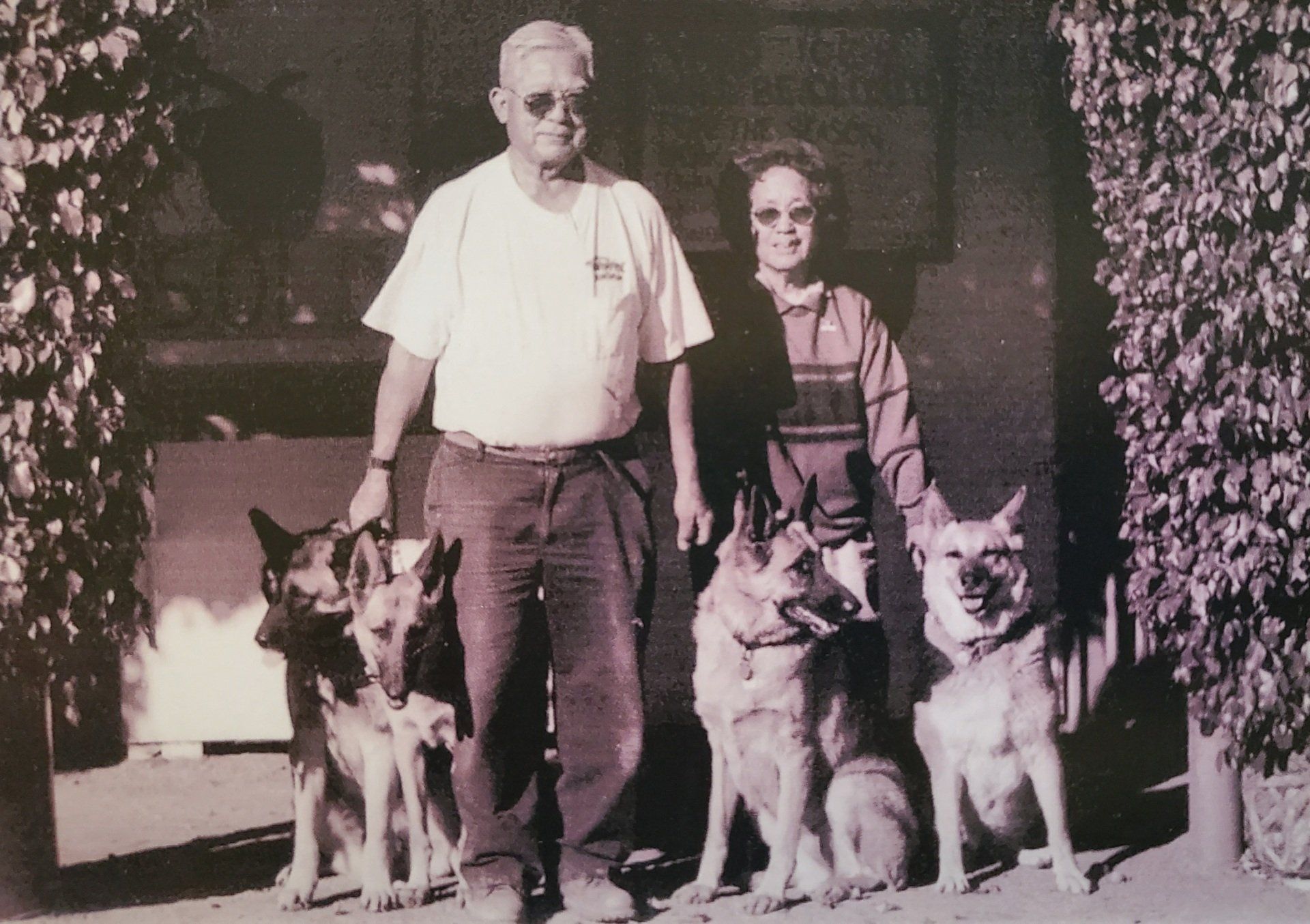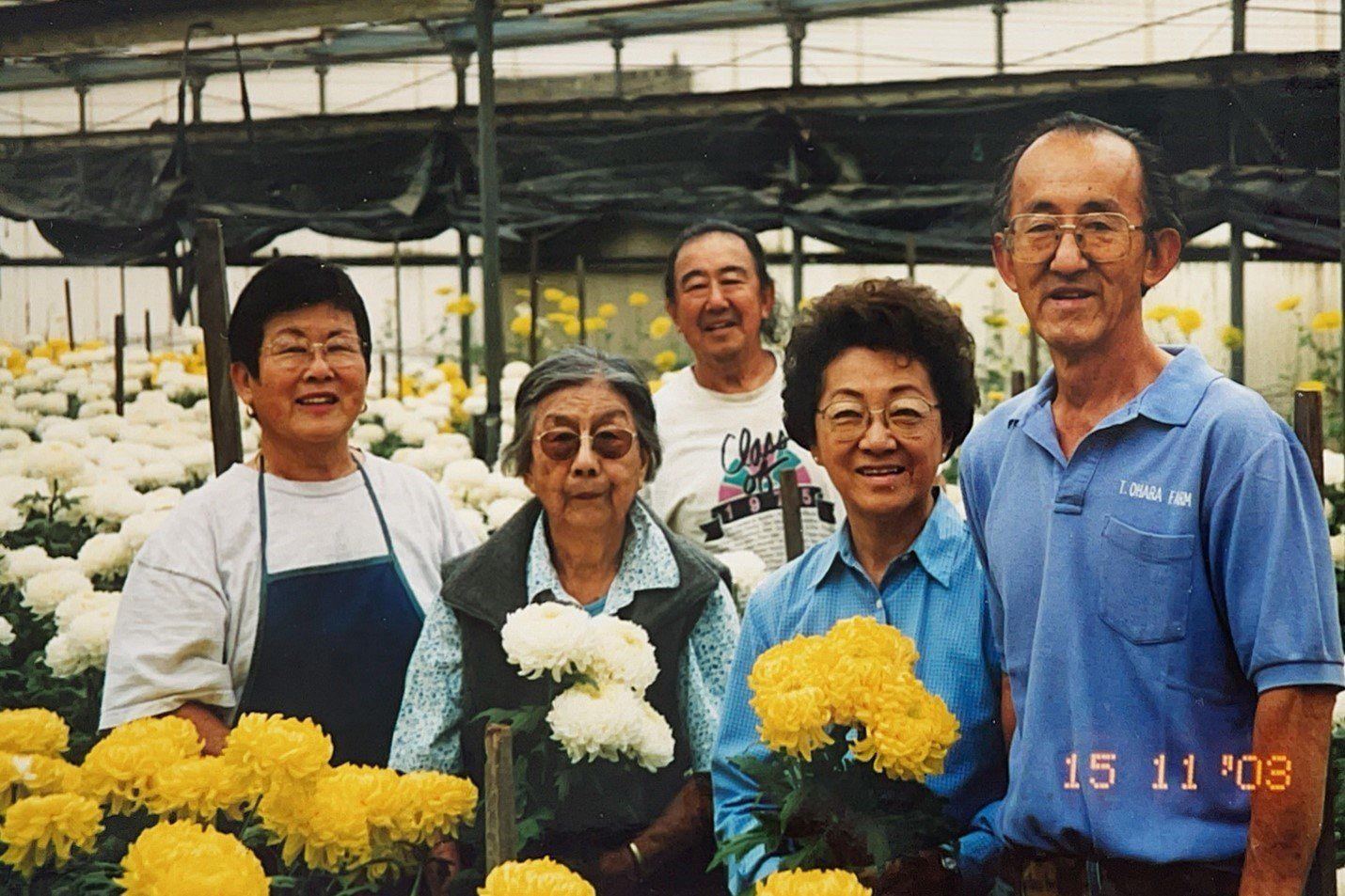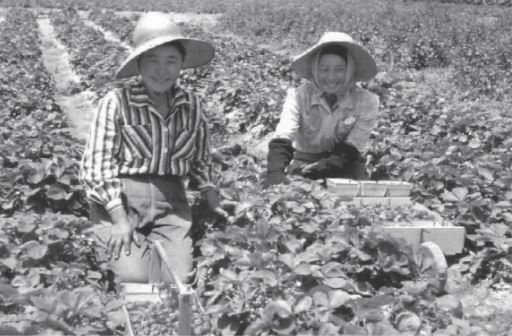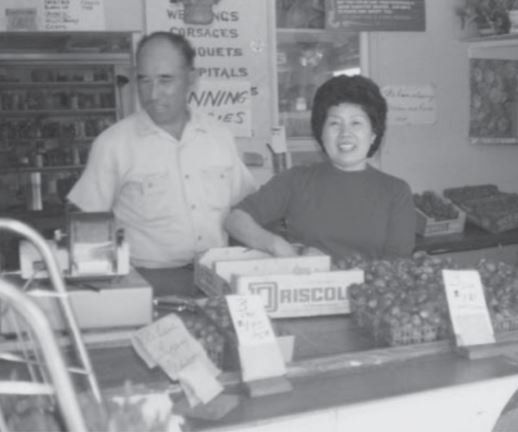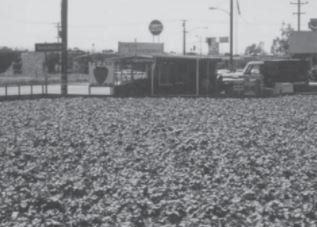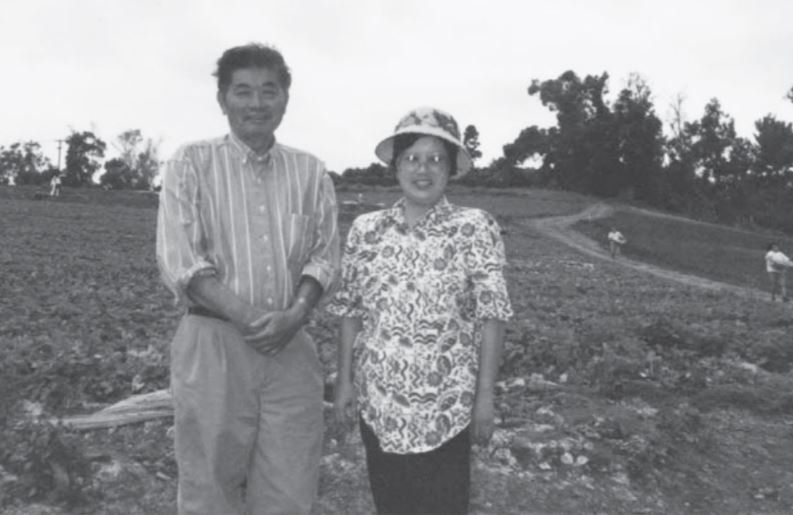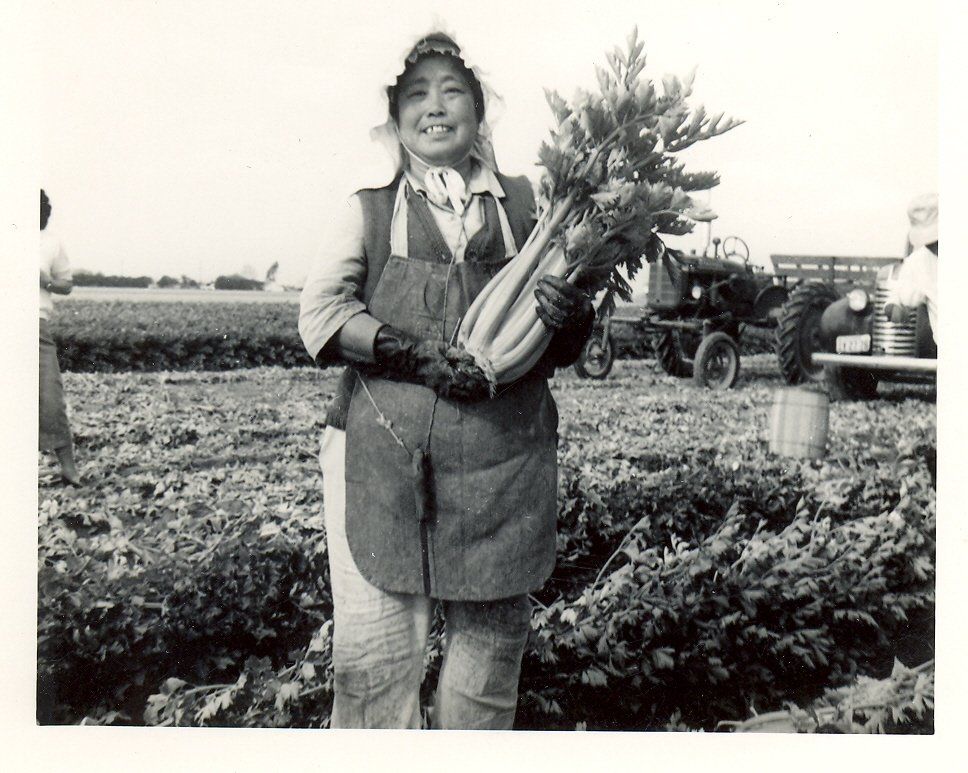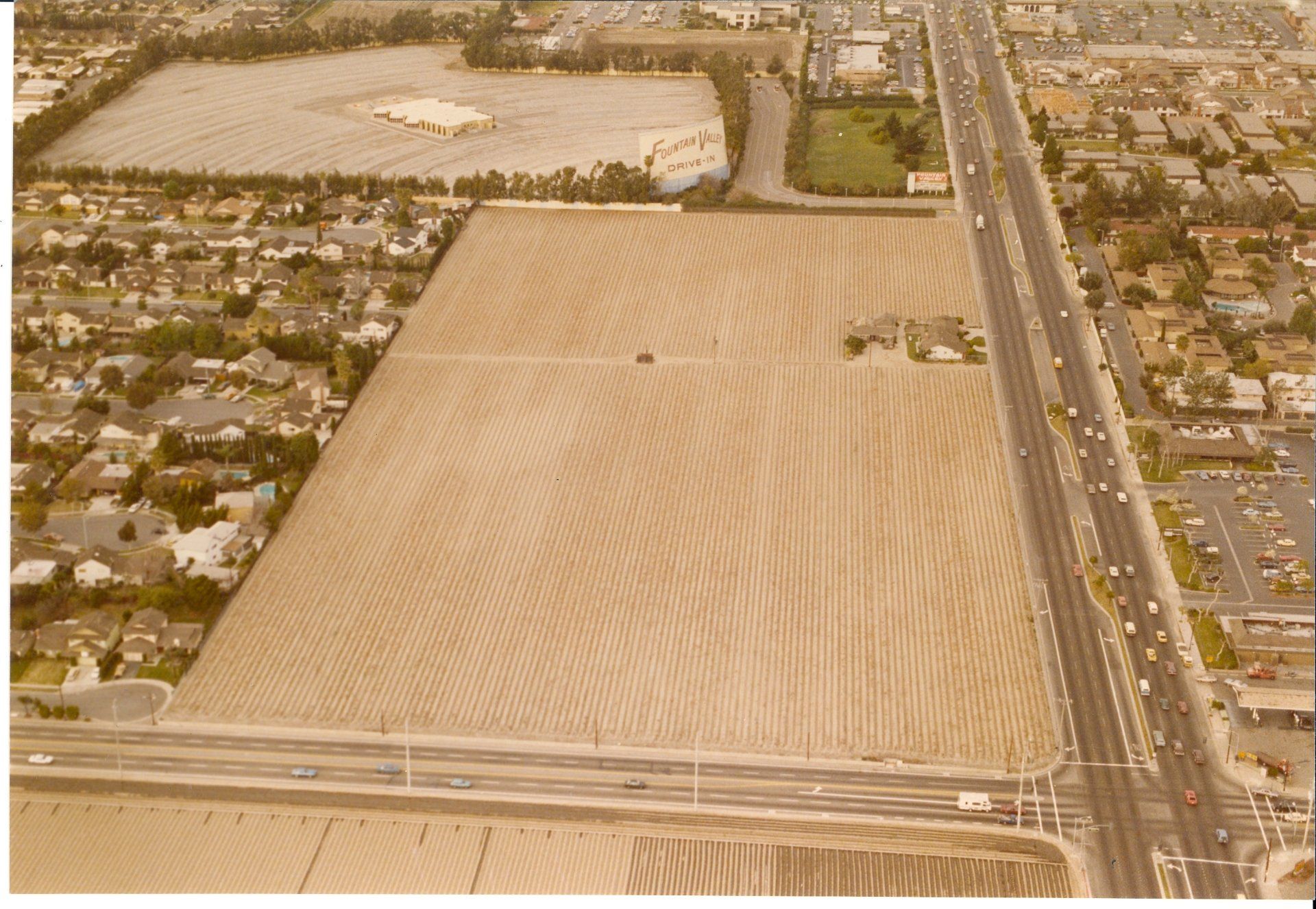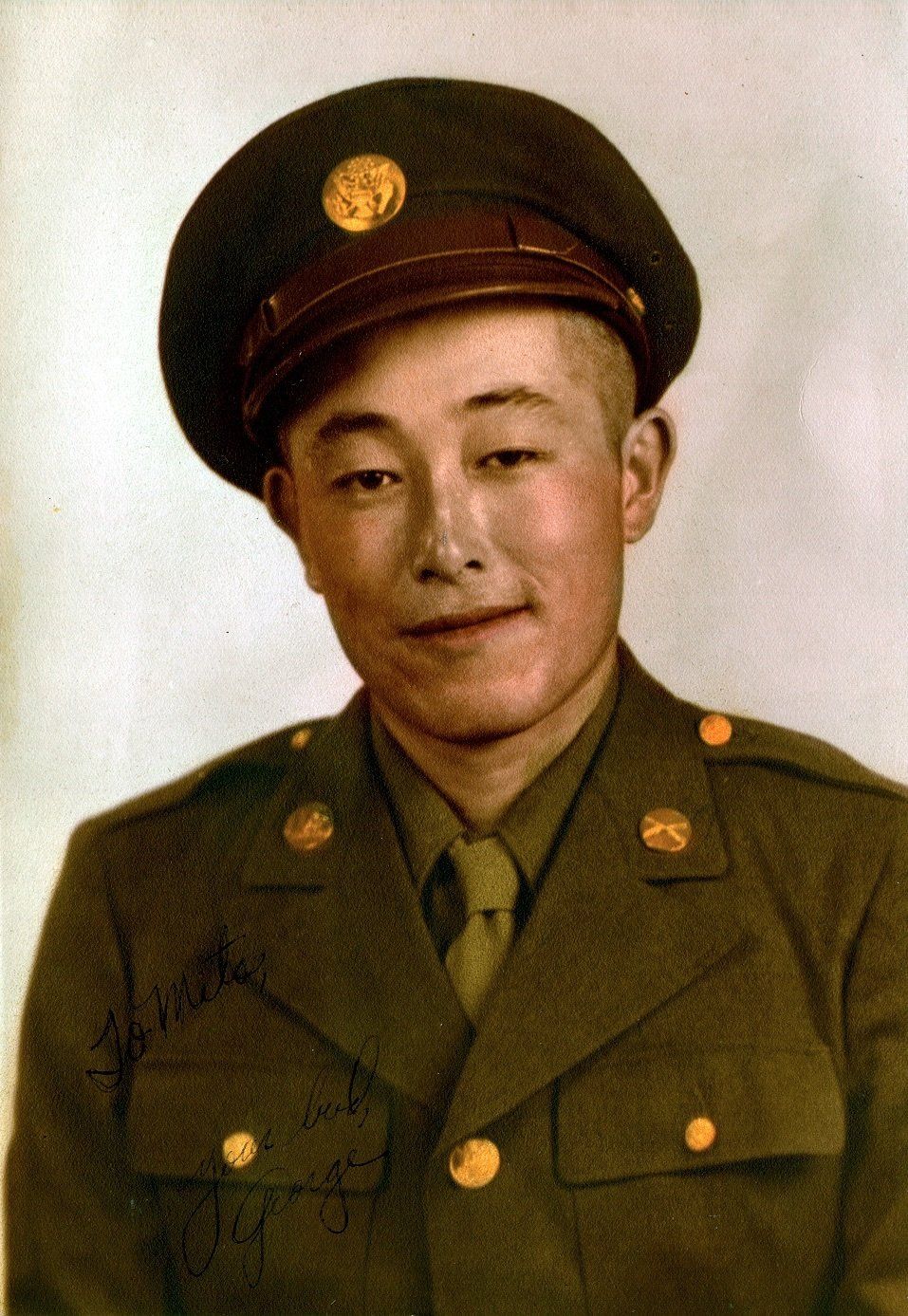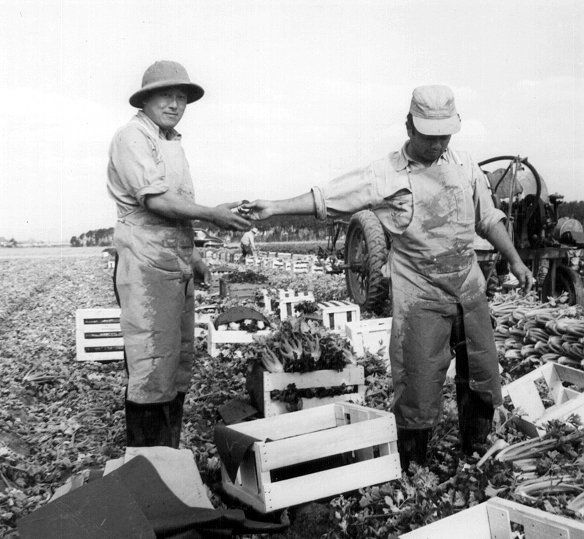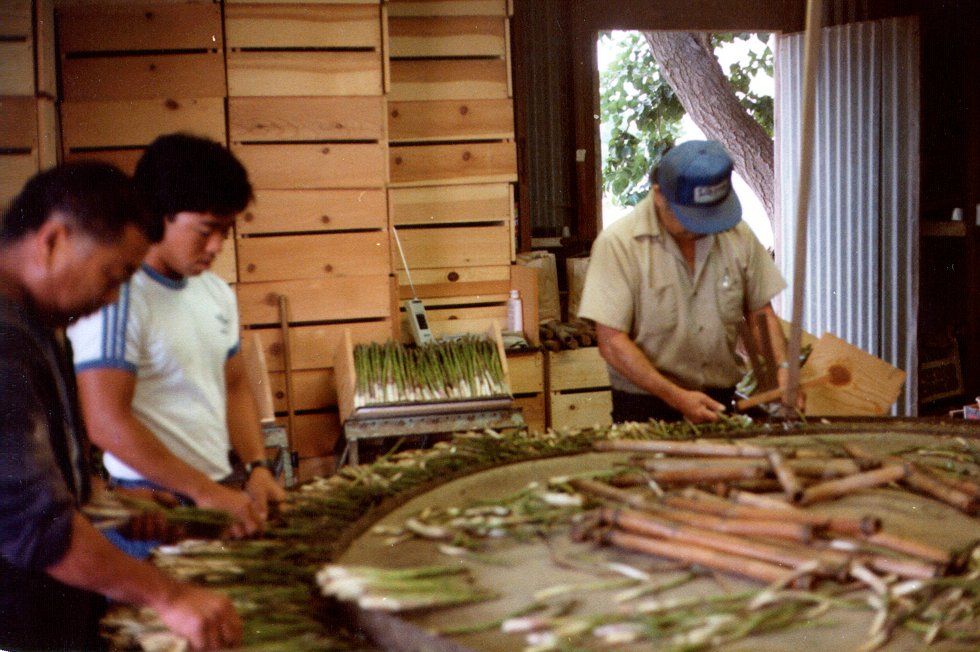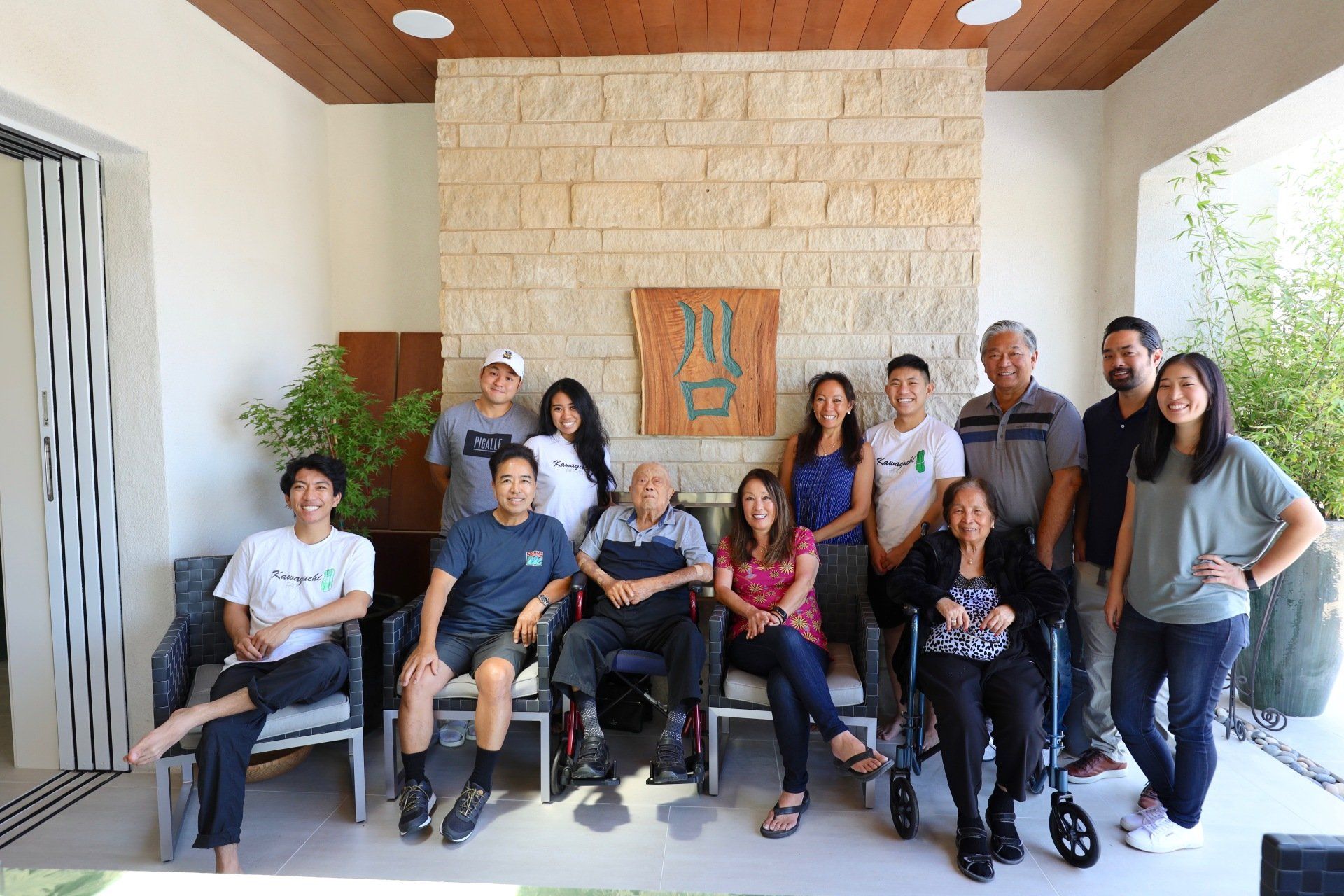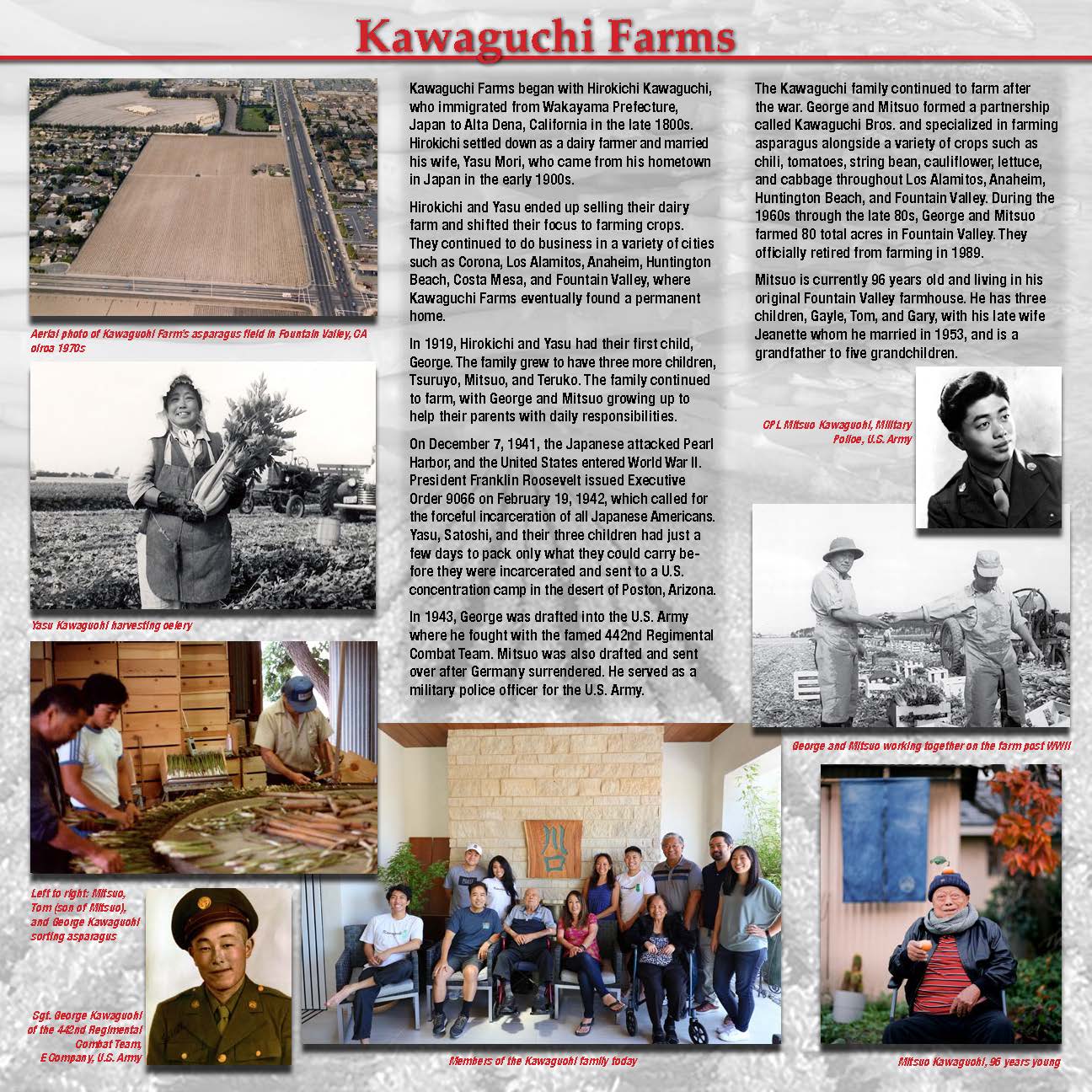Kawaguchi Farms
Kawaguchi Farms began with Hirokichi Kawaguchi, who immigrated from Wakayama Prefecture, Japan to Alta Dena, California in the late 1800s. Hirokichi settled down as a dairy farmer and married his wife, Yasu Mori, who came from his hometown in Japan in the early 1900s. Wakayama Prefecture in Japan is known for its rich agriculture, so it’s no wonder Hirokichi felt at home in Southern California with its similar sunny climate. Hirokichi and Yasu ended up selling their dairy farm and shifted their focus to farming crops. They moved throughout Southern California where land was available since at the time Issei were not allowed to become American citizens and therefore unable to own land. They continued to do business in a variety of cities such as Corona, Los Alamitos, Anaheim, Huntington Beach, Costa Mesa, and Fountain Valley, where Kawaguchi Farms eventually found a permanent home.
In 1919, Hirokichi and Yasu had their first child, George. The family grew to have three more children, Tsuruyo, Mitsuo, and Teruko. Unfortunately, Tsuruyo passed away in 1926 at the age of two from measles. Two years later in 1928, Hirokichi passed away from a heart attack at 47 years old. Yasu would eventually meet Satoshi Yoshizato, who would become a stepfather to her children. The family continued to farm, with George and Mitsuo growing up to help their parents with daily responsibilities. All three children attended Huntington Beach high school, where George played football and Mitsuo was on the swim team.
On December 7, 1941, the Japanese attacked Pearl Harbor, and the United States entered World War II, disrupting the Kawaguchi family’s way of life. The sentiment in their surrounding community shifted, with a lot of the American public uncertain and suspicious of anyone of Japanese descent. A few months later, President Franklin Roosevelt issued Executive Order 9066 on February 19, 1942, which called for the forceful incarceration of all Japanese Americans. Yasu, Satoshi, and their three children had just a few days to pack up what they could carry before they were incarcerated and sent to a U.S. concentration camp in the desert of Poston, Arizona. Yasu, Satoshi, and Teruko would remain in the concentration camp until the end of the war in 1945, while after some time in Poston, George and Mitsuo were granted permission to work in Chicago on a mushroom farm in order to earn a living for their family.
In 1943, George was drafted into the U.S. Army where he fought with the famed 442nd Regimental Combat Team, an Army unit comprised of Japanese Americans from Hawaii and the mainland United States. Two years later, Mitsuo was also drafted and sent over after Germany surrendered. He served as a military police officer for the U.S. Army and was assigned to guarding the supply trains in occupied Germany. The two returned home when their respective military services ended, rejoining their family in Fountain Valley.
The Kawaguchi family continued to farm after the war. They were more fortunate than many other interned Japanese American families because they were able to entrust their property and farm equipment to their local neighbors, the Courreges family, who protected it from attempted theft and vandalism fueled by anti-Japanese sentiment. In addition to the Courreges family’s help, the Kawaguchi family’s farm hand, Juan Miranda, stayed on during the war and tended to the land, keeping it in good condition until their return.
George and Mitsuo formed a partnership called Kawaguchi Bros. and specialized in farming asparagus alongside a variety of crops such as chili, tomatoes, string bean, cauliflower, lettuce, and cabbage throughout Los Alamitos, Anaheim, Huntington Beach, and Fountain Valley. During the 1960s through the late 80s, George and Mitsuo farmed 80 total acres in Fountain Valley.
George and Mitsuo would have continued to pursue farming as their livelihood, but eminent domain, the government power to take private property and convert it to public use, created complications for the two brothers’ farming business. Recognizing the obstacle this posed to their progress after two attempted acquisitions, George and Mitsuo initiated a controlled sell off of their land to home-builders. This process allowed them to phase out of farming and transition to other business ventures. In 1989, George and Mitsuo officially retired from farming, but continued to be business partners for the rest of their lives until George’s passing in 2010 at the age of 91.
Mitsuo is currently 96 years old and living in his original Fountain Valley farmhouse. He has three children, Gayle, Tom, and Gary, with his wife Jeanette whom he married in 1953, and is a grandfather to five grandchildren.
Yasu Kawaguchi harvesting celery
Aerial photo of Kawaguchi Farm's asparagus field in Fountain Valley, CA circa 1970s
Sgt. George Kawaguchi of the 442nd Regimental Combat Team, E Company, U.S. Army
CPL Mitsuo Kawaguchi, Military Police, U.S. Army
George and Mitsuo working together on the farm post WWII
Left to right: Mitsuo, Tom (son of Mitsuo), and George Kawaguchi sorting asparagus
Members of the Kawaguchi family today
Mitsuo Kawaguchi, 96 years young

